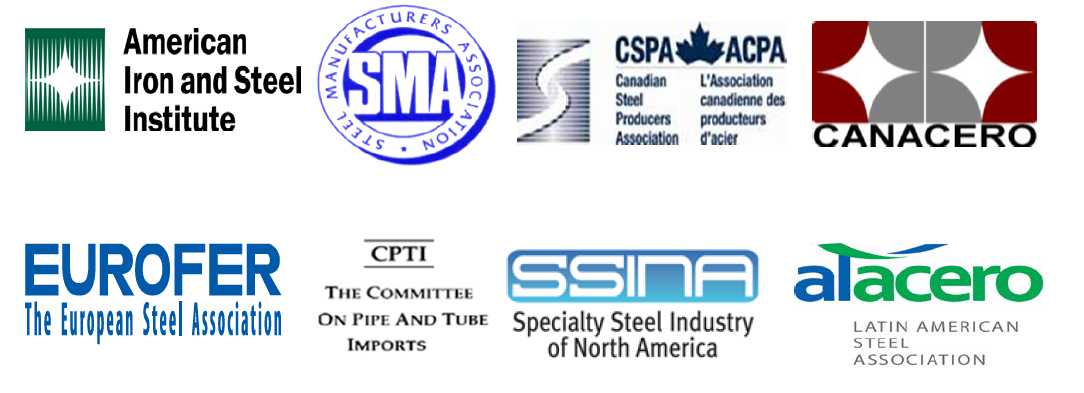Economy

The World Unites Against Chinese Steel Exports
Written by Sandy Williams
April 26, 2015
Eight steel organizations across the world have united to address Chinese steel exports and overcapacity. In a letter to China, industry associations from North America, Latin America and Europe offered comments on China’s draft Steel Industry Adjustment Policy (2015 Revision) .
The Policy is intended to realign the Chinese steel industry to market demand but the steel association group says the policy falls short of its goals.
Although the Policy is intended to “make the market play a decisive role in the allocation of resources” it also continues the practice of government intervention making the market role secondary to that of the government, says the steel organization group.
“Indeed, similar to previous Chinese policies for the steel industry, the Adjustment Policy demonstrates that the government intends to continue its top-down management of all major aspects of the industry’s development, both domestically and globally. This includes everything from the number and location of enterprises in the industry, to the products that they should produce and the technologies that they should use to produce them.”
For example, the Policy calls for the creation of three to five ultra large steel groups to dominate the market with government support. The top ten steel groups are to account for no less than 60 percent of China’s steel production by 2025. The policy also dictates the steel product mix, research and development targets, and how much revenue should be achieved from new products.
The group of eight says the use of words in the Policy such as “supporting,” “encouraging,” and “promoting” are a signal that the government will continue to provide subsidies and other assistance to the market, which has caused trade friction between China and its trade partners.
“Moreover, the Policy does not remove the primary barrier to market reforms in the Chinese steel industry – state ownership.”
“As long as the industry is subject to substantial state ownership, the government, and not the market, will play the decisive role in the allocation of resources.”
The Policy calls for loosening of restrictions on foreign investment but does not say whether foreign entities can own a controlling stake in a major Chinese steel producer.
Severe overcapacity continues to be a problem in China despite attempts by the government to consolidate mills. By China Iron and Steel Association estimates, there is 1.25 billion tonnes of crude steel capacity in China. Last year actual production totaled 823 million tonnes indicating an overcapacity of more than 425 million tonnes. The Policy calls for “reasonable” levels of production capacity with a goal of reaching a capacity utilization rate of 80 percent by 2017.
The steel group suggests that for China to reach its 80 percent goal by 2017, it would need to reduce capacity by approximately 112.5 million metric tons per year at the current production rate. It would require significant mandatory closures and a long-term commitment by the Chinese to stop industry interference and allow market forces to dictate industry development.
Consolidation does not necessarily remove capacity and instead, the excess capacity is being sent abroad through government supported foreign investments and acquisitions, as well as targeting foreign markets for Chinese steel exports.
The steel groups concluded their comments with the following statement:
“The steel industries of North America, Latin America, and Europe appreciate and fully support the Adjustment Policy’s stated goals of reducing overcapacity, allowing the market to play a decisive role in the allocation of resources, and building a fair and competitive market environment for China’s steel sector. Achieving these goals according to clearly stated timelines is necessary for the long-term stability and health of the Chinese and global steel industries. However, we believe that the Policy does not introduce market-oriented reforms that are sufficient to achieve these goals and will therefore not adequately address the significant problems facing the Chinese steel industry. Unfortunately, the Adjustment Policy continues to reflect a top-down, state-dominated approach to reforming the steel industry – thereby maintaining an environment where market forces do not apply. In our view, the only way to achieve the Policy’s stated objectives is to eliminate government interference in the industry and allow basic market forces to dictate industry outcomes.”

Sandy Williams
Read more from Sandy WilliamsLatest in Economy

Architecture billings continue to slide in March
Architecture firms said billings continued to decline in March, according to the latest Architecture Billings Index (ABI) released by the American Institute of Architects (AIA) and Deltek.

Beige Book shows concerns about trade policy
Manufacturing was mixed, but two-thirds of districts said activity was little changed or had declined.

New York state manufacturing index drops again in April
Firms were pessimistic, with the future general business conditions index falling to its second lowest reading in the more than 20-year history of the survey

Construction adds 13,000 jobs in March
The construction sector added 13,000 jobs, seasonally adjusted, in March, but tariffs could undermine the industry.

Supply chains, end-users brace for impact from tariffs
Supply chains are working through what the tariffs mean for them

